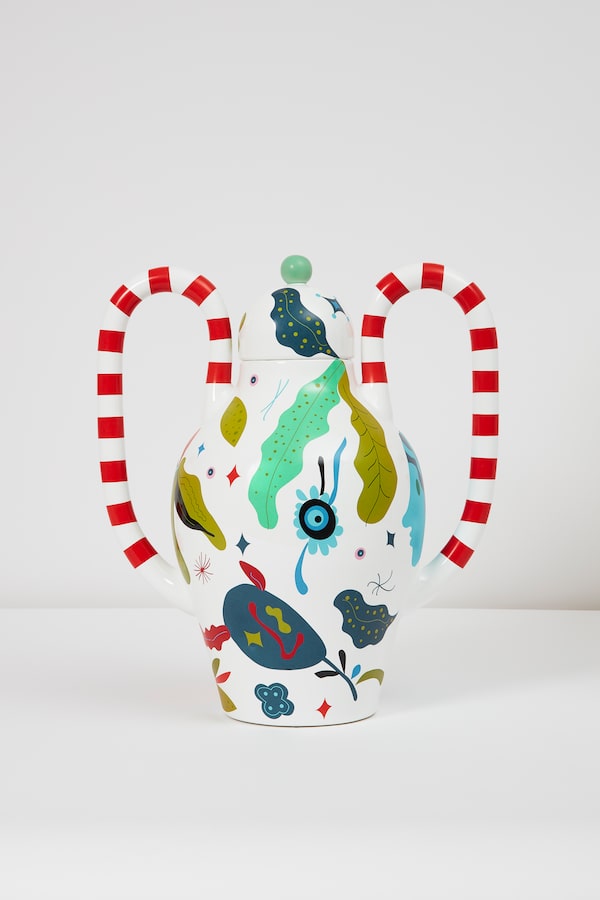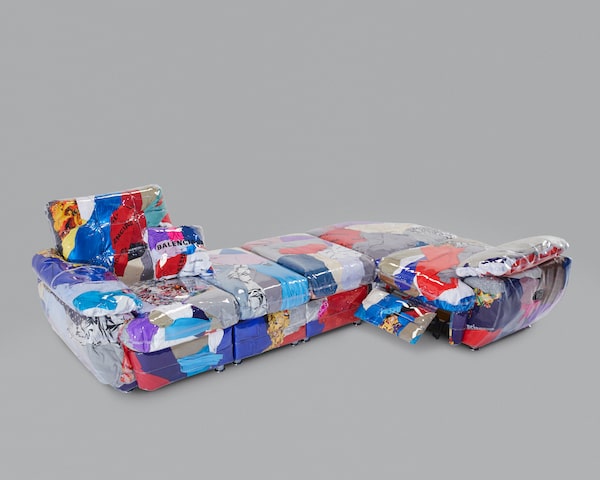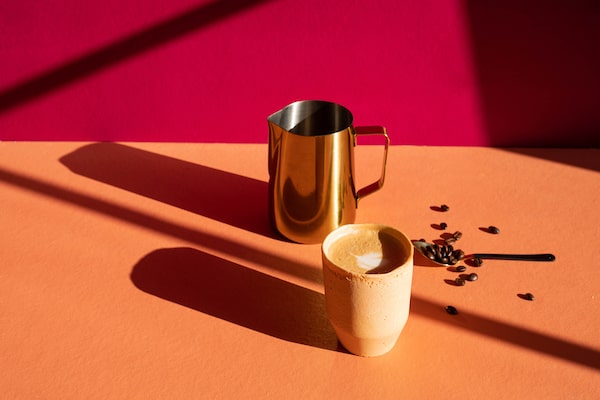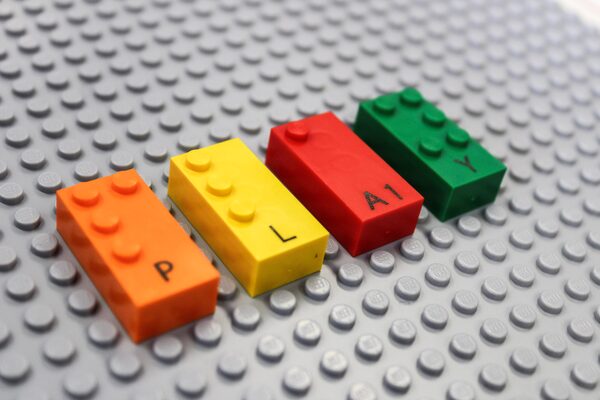A coach seat that might actually be comfortable
The true cost of an economy-class airfare isn’t just the price of the ticket. It’s also the toll taken on the knees, which almost inevitably get crunched against the seat ahead.
A new seating concept announced in 2019 by Airbus, and designed by Layer, a studio in London, presents a joint-saving change. Called Move, it incorporates laptop storage between the seats, leaving more floor room for feet. And instead of bulky foams and plastics, each chair is fabricated from a slim frame of aluminum-and-carbon fibre with a wool-polyester upholstery – not only saving space for legs, but reducing the weight of each plane and therefore the amount of fuel needed to fly.
One big change is that the seats don’t recline – another means of preventing knee bumping. That might not sound comfy, but to compensate, the tension and temperature of each chair is adjustable. If someone wants a soft, cool feel, they can program that via an app. The same app also aims to care for passengers in other ways. It alerts them when they’ve been sitting too long and when the dry airplane air might necessitate a glass of water. Critically, it also has a massage feature, to soothe both muscles and mind if, say, there’s a screeching baby nearby.
There’s no date yet for when Airbus might introduce Move into its planes. But for the sake of anyone who can’t afford a business-class ticket, let’s hope the date is soon.
Maison Matisse

A series of vases by Spain’s Jaime Hayon have an undeniable air of Matisse.SebastienPatron/Supplied
It’s not hard to find tchotchkes featuring the work of famous artists. Art gallery gift shops are filled with mugs and magnets donning van Gogh’s sunflowers and Degas’s ballerinas.
The Maison Matisse line of ceramics, launched in 2019 for the 150th anniversary of the artist’s birth, is far classier than that. The brand was founded by two of Henri Matisse’s 14 great-grandchildren – brother and sister Jean-Matthieu and Anne-Maxence Matisse – and was conceived over a 10-year period to ensure as many living descendants as possible approved of the project.
Rather than simply slapping images of paintings on generic pottery, the brand engaged some of the world’s most celebrated designers – Italian architect Alessandro Mendini, French brothers Ronan and Erwan Bouroullec – to reinterpret Matisse’s vision for a new age.
A series of vases by Spain’s Jaime Hayon have an undeniable air of Matisse – the form was loosely inspired by an urn from one of his still-lifes, the colours and shapes reflect Matisse’s love of Mediterranean culture. But distinct touches – eccentric, looping handles popping off the sides – also make them feel fresh, as though they are cool and covetable on their own, regardless of their provenance.
The initial release from Maison Matisse was limited to one hand-made version for each object, which pushed prices well beyond most people’s affordability (anywhere from US$7,810 to US$13,390). In early 2020, though, the company plans to release a line of lower-priced, factory-made objects designed by Parisian Marta Bakowski. The line will be inspired by La Musique, a vibrant, 1939 painting owned by the Albright-Knox Art Gallery in Buffalo, N.Y., but that might soon be brightening homes all over the world.
A sustainable sofa

The large L-shaped sectional design shows how to make both fashion and furniture more sustainable.INNA KABLUKOVA
F-waste, which refers to the fashion and furniture that ends up in the garbage, is a huge problem. Every year, Canadians throw out an average of 37 kilograms of clothing a person. Our landfills are also littered with desks, tables and bookcases. Sometimes, the refuse was never even used by anyone. Many design companies simply trash their unsold goods. Last year, Burberry faced a backlash when they admitted to burning their overstock.
A bold new design from French fashion house Balenciaga, in collaboration with New York-based, Russian-born architect Harry Nuriev, reimagines how to make both fashion and furniture more sustainable with a large L-shaped sectional. It is upholstered in up-cycled vinyl (off-cuts from some of Nuriev’s past design projects, and stuffed with never-worn cast-offs of old Balenciaga collections (cast-offs that would otherwise have been binned).
The form of the sofa is modelled on a traditional La-Z-Boy, a shape reminiscent of a couch Nuriev had in his childhood. The colours jolt the piece to life, with the vivid hues of the clothing, meticulously arranged for cohesion, visible through the vinyl. The contrast of a familiar shape and surprising materials is intentional, calibrated to be both recognizable to a wide range of people and challenging to their sensibilities at the same time.
Maybe that contrast is why the piece went viral when it debuted at Design Miami earlier this month. Elle Decor and Architectural Digest praised the idea. One Vogue review noted that “sitting in a pile of clothes has never looked, or felt, so good.” But perhaps the highest endorsement came from model and Instagram celebrity Bella Hadid. She interrupted a W magazine interview taking place on the couch so that she could sprawl across the cushions and pose for a selfie.
The ultimate reusable coffee cup

The mug can hold hot liquids for at least 24 hours, yet soft enough to bite into and eat after whatever liquid inside is done.Supplied
It takes about an hour for the average home chef to whip up a batch of biscotti. It took New Zealand startup Twiice, co-founded by father-and-son Stephen and Jamie Cashmore, about four years to develop and perfect their recipe. They aren’t bad bakers. They weren’t simply making the cookies to dip in coffee. Instead, they were trying to make the ultimate, edible coffee cup out of a version of the classic Italian treat.
Their resulting innovation, which looks a bit like a flat-bottomed ice cream cone, is dense enough to hold hot liquids for at least 24 hours, yet soft enough to bite into and eat after whatever liquid inside is gone. The biscuits leave a mild vanilla flavour in the brew, and although they are made from flour and eggs, vegan and gluten-free versions are in development.
Twiice was originally conceived in 2015 with the goal of cutting down on the billions of disposable coffee cups that are thrown out every year (five billion in Canada alone, according to Zero Waste international). They didn’t start selling until 2019 because the machinery necessary to shape and bake the cups was tricky to engineer.
But in the short time since launching, Twiice has grown rapidly. The cups are now available at various cafés in Auckland and other parts of New Zealand. And in early December, Air New Zealand announced they are going to pilot the cups as well. The airline is trying to cut down on the eight million disposable cups it throws out every year (it is also experimenting with compostable cups made of corn and paper). If the idea takes off, it could mean global consumption is about to skyrocket (to the delight of dentists and dietitians everywhere).
Lego blocks with braille

The braille lego blocks allow visually impaired children to play with their classmates, building strong, enduring relationships in the process.Oliver (Ollie) Cole
With ongoing cuts to special education, teaching braille to the visually impaired has declined in many parts of the world. Although Canadian statistics aren’t available, only 10 per cent of visually impaired children are learning braille in the United States, according to America’s National Federation for the Blind. In the 1950s, the proportion was over 50 per cent. For visually impaired children in Britain, the number is closer to 5 per cent, according to the Royal National Institute of Blind People.
The decline could have lifelong impacts. The European Blind Union has found that visually impaired adults who have learned braille have higher educational attainments, better employment opportunities and are able to lead more independent lives. Although the rise of audio tools helps offset the decline in braille, the touch-based language is still an important way for the visually impaired to navigate many spaces and learn about the world around them.
As a way to introduce braille to children who need it (and to some who are simply curious), Lego has designed a 250-brick collection with its signature, interlocking nubs composed to make the shape of the braille alphabet (available in multiple languages, including English and Portuguese), as well as numbers one through nine and various math symbols. To maximize the impact, the collections are being distributed free of charge to organizations in different countries that help the visually impaired. Audio guides are also available that provide instructions to create various Lego creations.
Beyond teaching braille, the bricks have a secondary benefit. They are designed to not only interlock with each other, but standard Lego as well, enabling and encouraging visually impaired children to play with their classmates, building strong, enduring relationships in the process.
Live your best. We have a daily Life & Arts newsletter, providing you with our latest stories on health, travel, food and culture. Sign up today.